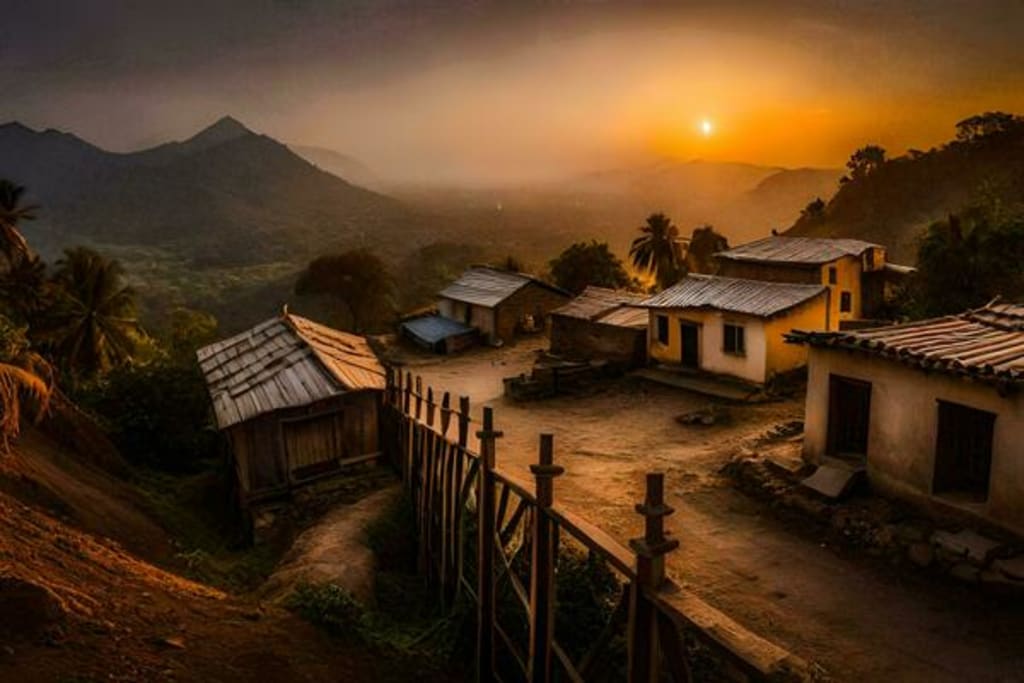
Village life, characterized by simplicity, tranquility, and a close-knit community, offers a stark contrast to the hustle and bustle of urban living. At the heart of village life is a deep connection to nature and the land, where the rhythms of daily activities are closely tied to the cycles of seasons. This profound relationship with the environment manifests in agricultural practices, which are often the primary occupation for villagers. Fields of crops stretch out in neat rows, tended by hands that have learned the art of farming from generations past. The early morning sun casts a golden glow over these fields, and the air is filled with the chirping of birds and the soft rustling of leaves.
In a village, the pace of life is unhurried. People wake up with the dawn and go to bed not long after sunset, their lives dictated by natural light rather than artificial sources. This slower pace allows for a different kind of productivity, one that values quality over quantity. The daily routine often includes tending to livestock, working in the fields, and engaging in various artisanal crafts. Each task, whether it be milking a cow, plowing a field, or weaving a basket, is performed with a sense of pride and craftsmanship that has been honed over years.
Community is the cornerstone of village life. Everyone knows everyone else, and there is a strong sense of mutual support and cooperation. Celebrations and festivals are communal affairs, bringing together people of all ages to partake in the joy of the moment. These events often involve traditional music, dance, and food, providing a sense of continuity and belonging. The bonds of kinship and friendship are strong, and it is common for multiple generations of a family to live under one roof or in close proximity, fostering a deep sense of familial connection.
The simplicity of village life extends to the infrastructure and amenities available. Houses are typically modest, constructed from locally sourced materials such as wood, mud, or stone. These homes are built to withstand the local climate and are often designed to be functional and sustainable. Modern conveniences like running water, electricity, and internet access may be limited or absent, but this lack of technology is often compensated by a greater appreciation for direct human interaction and a reliance on traditional methods of communication and entertainment.
One of the most notable aspects of village life is the close relationship villagers have with nature. The natural surroundings play a crucial role in shaping the daily lives and cultural practices of the community. For instance, the agricultural calendar dictates the timing of festivals and rituals. Planting and harvest seasons are marked by celebrations that honor the land and its bounty. This reverence for nature is also evident in the way villagers utilize natural resources. There is a strong emphasis on sustainability and conservation, as the well-being of the community is directly tied to the health of the environment.
Education in villages often takes on a more informal and practical approach compared to urban settings. While formal schooling is present, much of the learning happens through hands-on experience and oral traditions. Children grow up observing and participating in the daily activities of their elders, acquiring skills and knowledge that are essential for village life. This experiential learning fosters a deep understanding of the land, the community, and the cultural heritage of the village.
Healthcare in villages can be rudimentary, with limited access to modern medical facilities. However, this is often supplemented by traditional medicine and the use of locally available herbs and remedies. The knowledge of these natural treatments is passed down through generations and is an integral part of the village’s collective wisdom. In times of illness, the community comes together to support the affected individuals and their families, providing both practical help and emotional comfort.
The economic structure of villages is typically based on agriculture and small-scale industries. Farmers grow crops not only for their consumption but also for sale in local markets. This local economy is often self-sustaining, with villagers producing much of what they need, from food to clothing to household items. Bartering is still a common practice in many villages, highlighting the interconnectedness of the community members.
Despite the many positive aspects of village life, it is not without its challenges. Isolation from larger urban centers can lead to a lack of access to certain services and opportunities. Employment options outside of agriculture may be limited, leading some villagers to migrate to cities in search of better prospects. Additionally, traditional gender roles and societal norms can sometimes restrict individual freedoms and opportunities, particularly for women and young people.
However, there is a growing recognition of the value of preserving village life and its unique cultural heritage. Efforts are being made to improve infrastructure and access to education and healthcare, while also promoting sustainable development practices. Tourism is increasingly seen as a way to generate income and raise awareness about the importance of rural communities. Visitors are drawn to the authenticity and charm of village life, where they can experience a way of living that is closely attuned to nature and community.
In conclusion, village life embodies a way of living that is deeply connected to the land and to each other. It offers a sense of peace and fulfillment that comes from living in harmony with the natural world and being part of a close-knit community. While it faces challenges, the resilience and resourcefulness of villagers, coupled with efforts to preserve and enhance rural life, ensure that this way of life continues to thrive. For those who seek a simpler, more meaningful existence, village life remains a compelling and enduring option.
About the Creator
Ayesha Khalid
"I am a versatile individual, adept at learning new skills with a passion for creation and design. My journey is marked by curiosity and a drive to innovate, exploring realms where creativity thrives.
Enjoyed the story? Support the Creator.
Subscribe for free to receive all their stories in your feed. You could also pledge your support or give them a one-off tip, letting them know you appreciate their work.






Comments
There are no comments for this story
Be the first to respond and start the conversation.